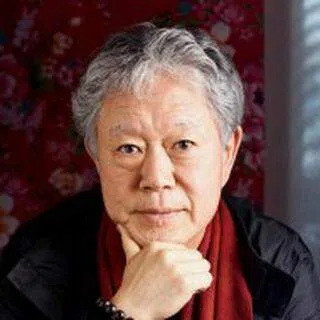Taiwanese art historian: The madness of Aries
Taiwanese art historian Chiang Hsun reflects on the prominent Arians from history and those he had encountered. Perhaps there is a wildness in them passed on from generation to generation that brings together poetry, instincts, and even the power of madness.
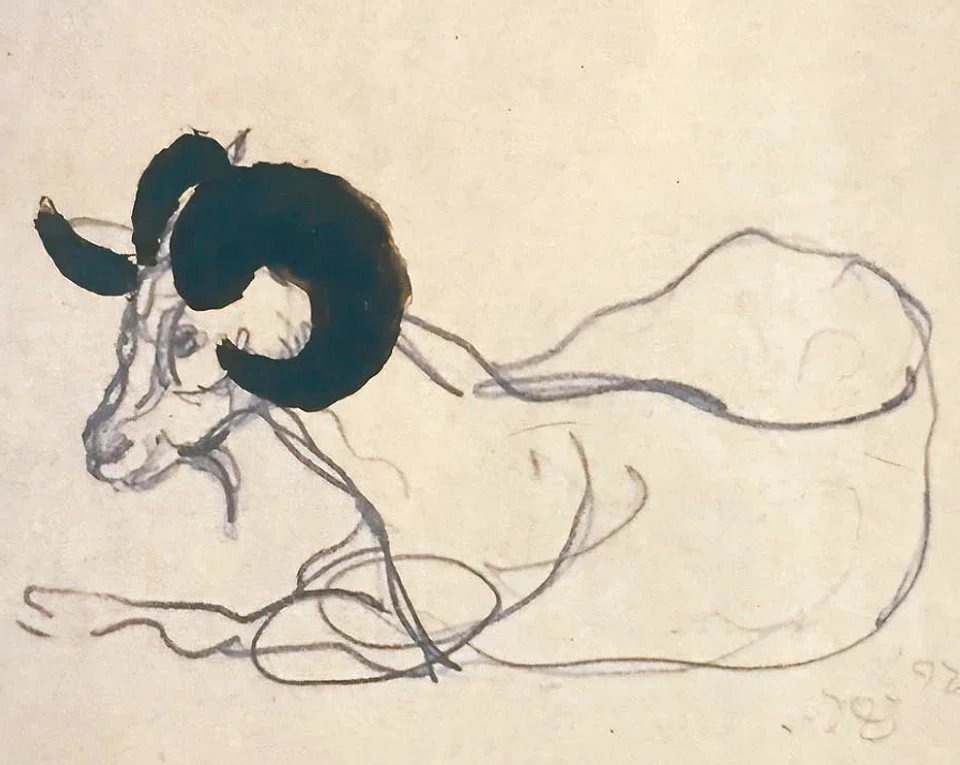
I had a sudden realisation one day that I am surrounded by several Arians.
Leisha (雷沙) is an Arian.
When I got to know him, he had just changed his Chinese name back to his matriarchal Atayal indigenous name. So I call him Leisha.
Leisha is a hair stylist and occasional commercial model.
He owns a stylish salon in the city centre and often returns to his tribe in Jianshi Shan (尖石山), where he runs a bed and breakfast. He plants trees on the mountaintop in the springtime and has already sown thousands of Chinese fringetrees. He said that the place is called the "Tribe of Clouds and Mist", but the elders previously called it the "Tribe of Butterflies". The butterflies are gone, and the tribe has changed its name.
Deciphering what we cannot understand
Leisha has some very beautiful tattoos on his body. He said that his grandmother was a witch doctor of the tribe and had tattoos on her face. He used to be very frightened of them when he was young.
Tattoos can sometimes be like a blood tie. We see them when we are young and may get a little scared or curious. But when we grow up, we miss them and hope to replicate them on our bodies.
Tattoos on the skin are sometimes like indelible memories from the depths of one's soul, such as curiosity, fear and dreams. They could also be the remnants of talismanic scripts from past lives.
... the divination lot we draw from a temple - we cannot understand it. Even if we can, we try everything possible to bypass it, thinking we can avoid what was written. But ultimately, we fall into the trap that destiny has prepared for us.
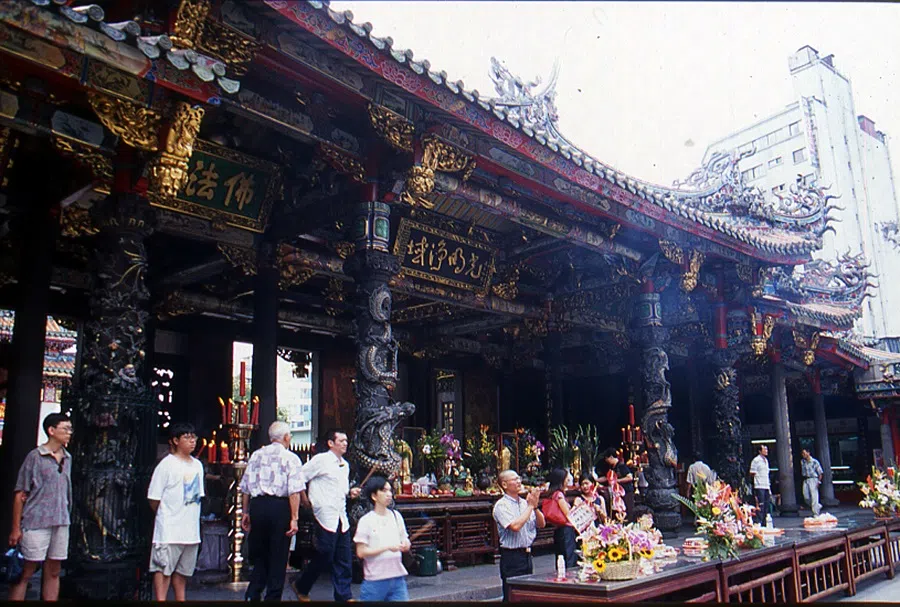
Talismanic scripts are made of words you can't understand and sometimes symbols you can't decipher.
The things that we cannot decipher or comprehend often possess a mysterious power transcending rationality.
A French friend came to Taiwan to study Taoist talismanic scripts. Those scripts were not words but had some semblance to them. They can be pasted on doors, hung inside cars, or burnt to ashes, dissolved in water and swallowed, each having different purposes.
The words that a spirit medium speaks when a god descends on them often sound like the gibberish you spout in a nightmare. We don't understand what was said, but they are powerful declarations.
The oracles of Apollo in Greek mythology were all incomprehensible or always misinterpreted.
The same applies to the divination lot we draw from a temple - we cannot understand it. Even if we can, we try everything possible to bypass it, thinking we can avoid what was written. But ultimately, we fall into the trap that destiny has prepared for us.
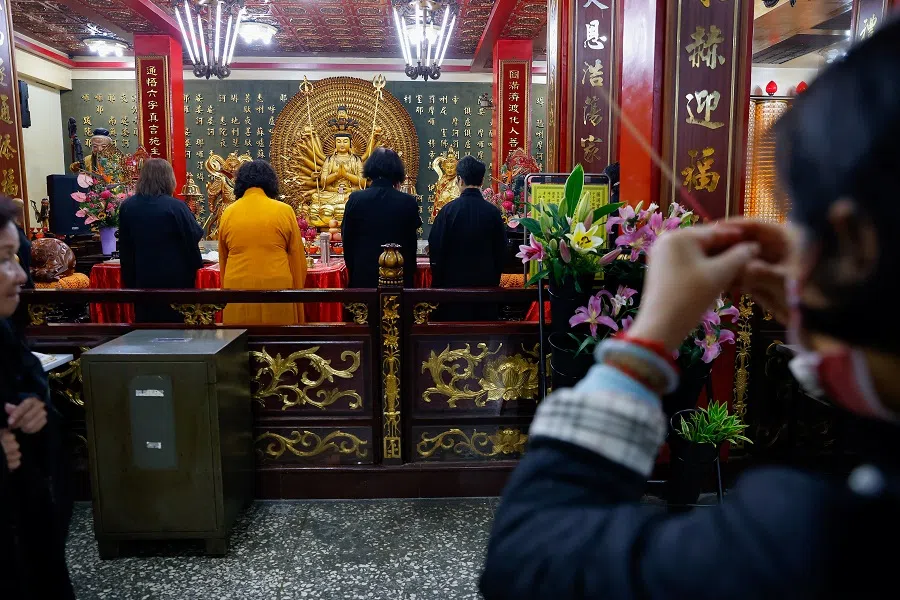
Have you ever heard a fortune teller say: "Accept your fate; you will never escape from blessings or curses."
We always want to escape. But fate sneers and says, "You're done for!"
The cracks of varying lengths would then be interpreted by the tribe's "witch". These cracks became the ancient Chinese character for "divination" (卜).
Mysterious and incomprehensible
The tattoos on Leisha's chest and arms resemble images telling a story of blood ties. They are comprehensible yet incomprehensible at the same time.
Like the pictographs inscribed on tortoise shells or ox scapulae (shoulder blade) for divination... I often visit the museum to look at those from the Shang dynasty.
Why was the tortoise shell used? Why was it the shoulder blade of an ox that was eaten and had its bones sun-dried and turned white?
The first people were greatly affected by earthquakes, solar and lunar eclipses, lightning, many unexplainable natural phenomena, and massacres that stained a river red.
A river stained red... Survivors thus turned to the gods for an answer.
And they always asked, "Why?" Why did the earth shake? Why did the mountain crumble? Why did the sun and moon turn black? Why was there thunder and lightning? Why did the wind howl and rain crash down? Why was there no rain for a long time?

Every oracle could represent the loss of tens of thousands of lives.
On a greyish white ox bone they inscribed a pictograph - a question they wished to ask. A hole was then drilled and the bone burned over fire until cracks appeared. The cracks of varying lengths would then be interpreted by the tribe's "witch". These cracks became the ancient Chinese character for "divination" (卜).
Some interpretations became words, or perhaps the talismanic scripts of the ignorant first people of ancient times. They are mysterious and beautiful, but also befuddling and instill fear in people.
The first people foretold heaven's will, blessings and curses based on these long and short cracks, just like how we would read the long and short lines on our palm today. We have inherited some of the witch's genes, as we try to interpret incomprehensible and mysterious images as logical hints.
Madness and civilisation
Leisha returned to his tribe and entered the old stone house of his great-grandmother, a witch doctor. He walked into the house and past the stones heavily spotted with mould, as though he was walking into the ruins of his soul - a civilisation was here once, but it is long forgotten, and thus became rubble.
Leisha heard the wind in the ruins say, "Come back..." Again and again, calling out to those who have wandered far away. He heard the voices of his ancestors, and tears immediately streamed down his face.
He said that his grandfather's name was Ba-ai (巴爱), so he gave this Atayal indigenous name to me.

Leisha organised a witch-themed exhibition to honour his witch doctor great-grandmother, so we talked a lot about "witches".
Wang Guowei, who studied oracle bone inscriptions, paid a lot of attention to the influence of witchcraft on ancient cultures. He studied the deductions of oracle bone inscriptions like a witch interpreting trigrams.
Many people are witches who have returned to interpret their past selves.
Michel Foucault thinks that madness and civilisation are intricately linked. Like witches of ancient times, the spirit mediums in today's temples are advancing civilisation through madness. Madness and insanity are irrational, but more powerful than rationality.
Leisha and I discussed Warring States period poet Qu Yuan's Jiu Ge (《九歌》, Nine Songs) - an epic poem about wizards (xi 觋) and witches (wu 巫).
Wizards and witches were perhaps the handsome men and gorgeous women hand-picked by the tribe. Trying every trick in the book, they sang and danced, hoping to use their bodies to seduce gods and goddesses to descend into them. Witches try to entice Dongjun (东君), the Sun God, while wizards try to attract the beautiful and alluring Xiang River Goddesses (湘水之神).
When I read Jiu Ge, the witches and wizards wore masks, had tattoos on their bodies, and were entangled in vines and flowers. I always felt that the Xiang River Goddesses must be Virgos, while the wizard chosen to ignite the goddesses must be an Arian.
Without a witch ancestry, how is one to write poetry? Tang dynasty poet Li Bai was a lot like a witch - his insanity both destroyed and created a new Chinese language.
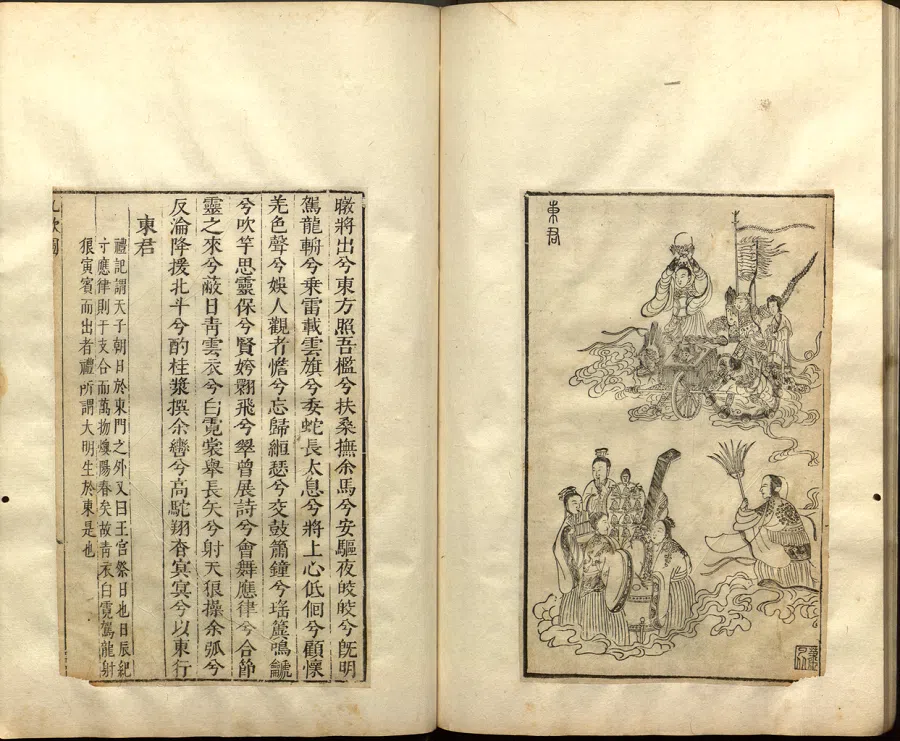
As my imagination ran wild, I told Leisha, "Release the witch trapped in your body..."
The witch-themed exhibition was a huge success. Leisha cried and laughed randomly in the documentary. He released some of the witchery that ran in his blood.
He only released some and not all - I believe the Aries has greater potential to become witches.
Leisha gave me his grandfather's name Ba-ai. I couldn't help but let my thoughts transcend the world: if my mother was a witch in a tribe, how powerful would the sun and the moon be in this man called Ba-ai?
Qu Yuan was very witch-like. It would be difficult to understand Jiu Ge otherwise.
Whenever I read Jiu Ge, I often felt as if the earth spun, the mountains crumbled and the seas came crashing down. It felt as if Qu was singing and dancing while high on psychedelics - Jiu Ge is a model of madness in ancient civilisation.
Aries rising from the east
But more precisely, can a poet not be like a witch?
Without a witch ancestry, how is one to write poetry?
Tang dynasty poet Li Bai was a lot like a witch - his insanity both destroyed and created a new Chinese language.
French poet Arthur Rimbaud was also like a witch. He was writing poems before the age of 20, turning Paris upside down. He didn't only subvert words but also sounds, colours, rules and ethics, as well as "civilisation" that he couldn't care less about.

In the distant galaxy, the Aries constellation is spying on the witches' descendants scattered all over the world.
The "witch" watches the starry night sky, trying to determine the orbital paths of the constellations in the complexity of the stars. How long does it take for the witch to look intently and remember the eighty-eight stars moving together in different directions in different seasons? They rise and they fall; sometimes they are bright, sometimes they are dull.
Around the spring equinox, that constellation would rise from the east of the Euphrates like a ram overlooking the valley. It has a huge and majestic pair of curved horns, a proud and white nose and forehead, and a pair of charming yet sorrowful eyes.
The Aries was a horoscope that the ancient witches had observed very early on. It was recorded in the literature of Babylon and Egypt.
The Four-goat Square Zun (四羊方尊) of the Shang dynasty is a massive bronze wine vessel with four ram heads protruding from each side, like an exaggerated announcement of the Aries.
During rituals, this ram-head vessel contained wine, which the witch proffered to the ancestors.
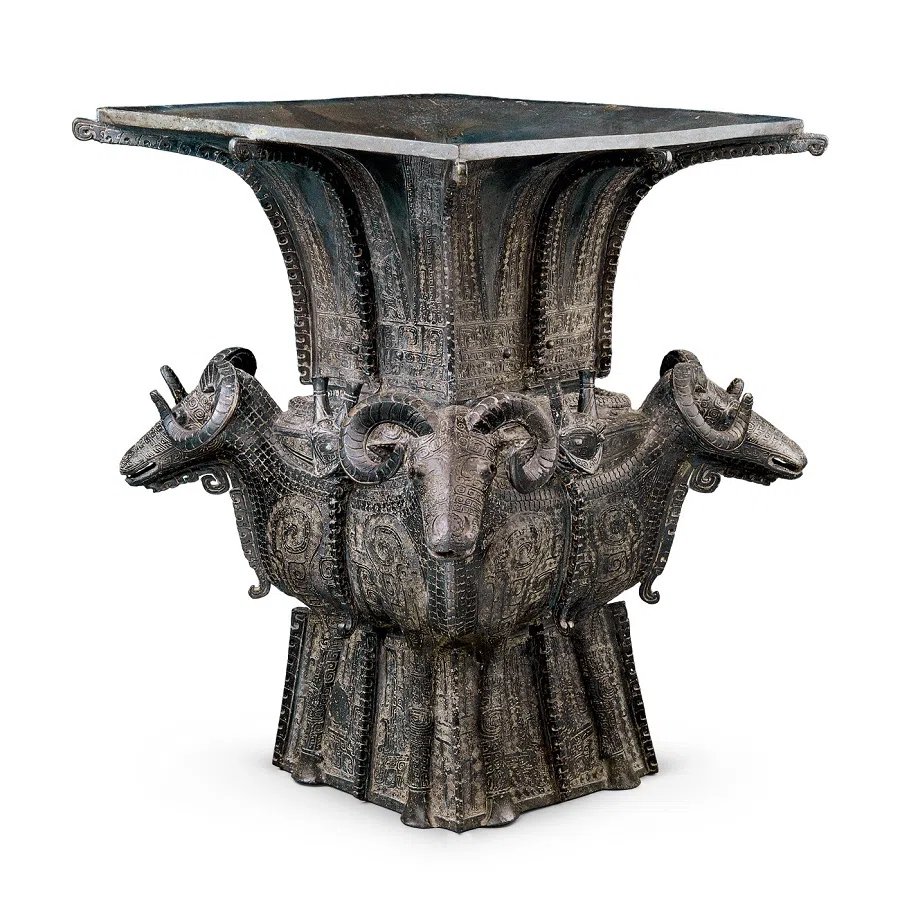
The witch's blood rushes and flows in the Arian Leisha.
At different times and places, the witches of Atayal, Babylon, Egypt and Ningxiang county during the Shang dynasty observed the shape of the Aries. They made it into a bronze wine vessel; weaved it into fabric; carved it onto tortoise shells and ox scapulae; sculpted it into Amun-Ra, a god with a ram's head; and tattooed it onto their own body.
Arians and scientists
The "witches" never disappeared - in a modern civilisation where positivist education brutally persecuted "witches", they escaped in different ways, hiding in different corners. One day, the "witch" will erase "rationality" again, and song, masks, dance, graffiti and talismanic scripts will triumph over hypocritical words and languages. That era will then find tattooed blood ties on bodies again.
Tattoos have returned to the mortal world, proving that the "witches" are back.
I told Leisha about the "witches" in the ancient Chu culture - gods with metre-long red tongues and round eyes resembling traffic lights on the street.
Nobody knows why these important carvings or paintings from Chu culture rituals are so powerful - juxtaposing destruction and creation.
The Hindu god Shiva also embodies both creation and destruction. Shiva is both male and female, yin and yang, and the beginning and the end.
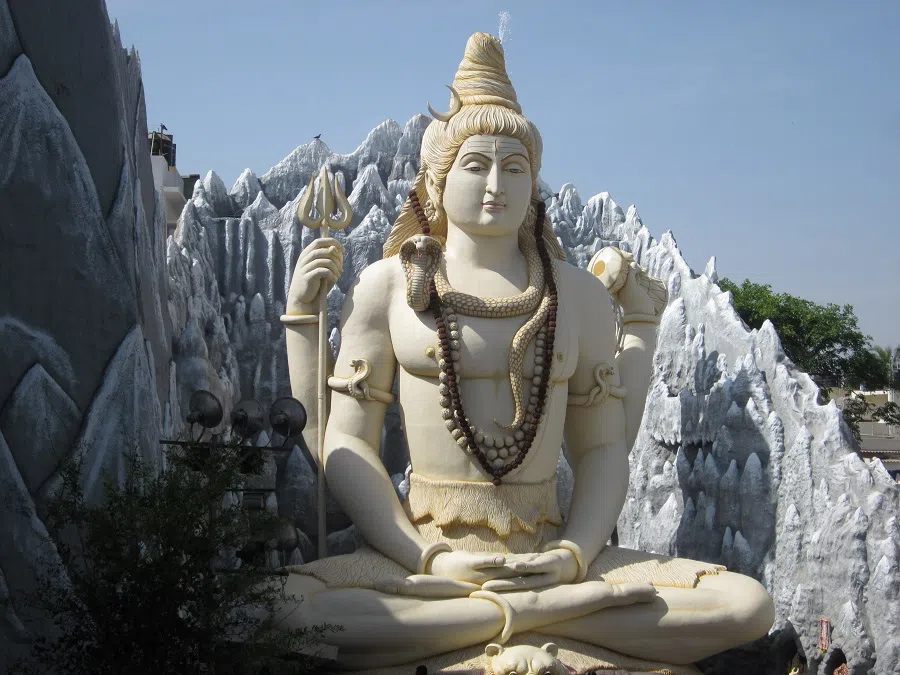
Leisha went to Milan for a fashion show. He sent me a photograph of himself wearing a camel coat.
I told him to go look at Leonardo da Vinci's The Last Supper since he was in Milan. Da Vinci was also an Arian, and the witch's genes were in his blood.
The witch's genes made him try all sorts of ways to fly. Many people think that da Vinci was the Father of Flight Theory. But maybe he merely wanted to fly - his drafts were filled with the flight of birds and bats. He was curious about how air moved and flowed.
He didn't only want to fly. He wanted to become a gust of wind.
Like a witch, he sat along the bank of Arno, watching the water ripple, flow, clash and gush, dispersing into foam and gathering into droplets.
His theory of fluid mechanics influenced the construction of bridges, dams and embankments. But he seemed more obsessed with watching water. Like a witch, he watched the sparkling reflection of the waves, and watched as they rose and fell, just like watching the stars rise, move and fall.
I like how da Vinci locked himself in a space without light to think about light. What is light? Arians write like a poet: light is a type of wave; it is too fast to be measured.
Science can be calculating, but not poetry. Poetry is utter loneliness - it requires one to sit in the darkness pondering light.
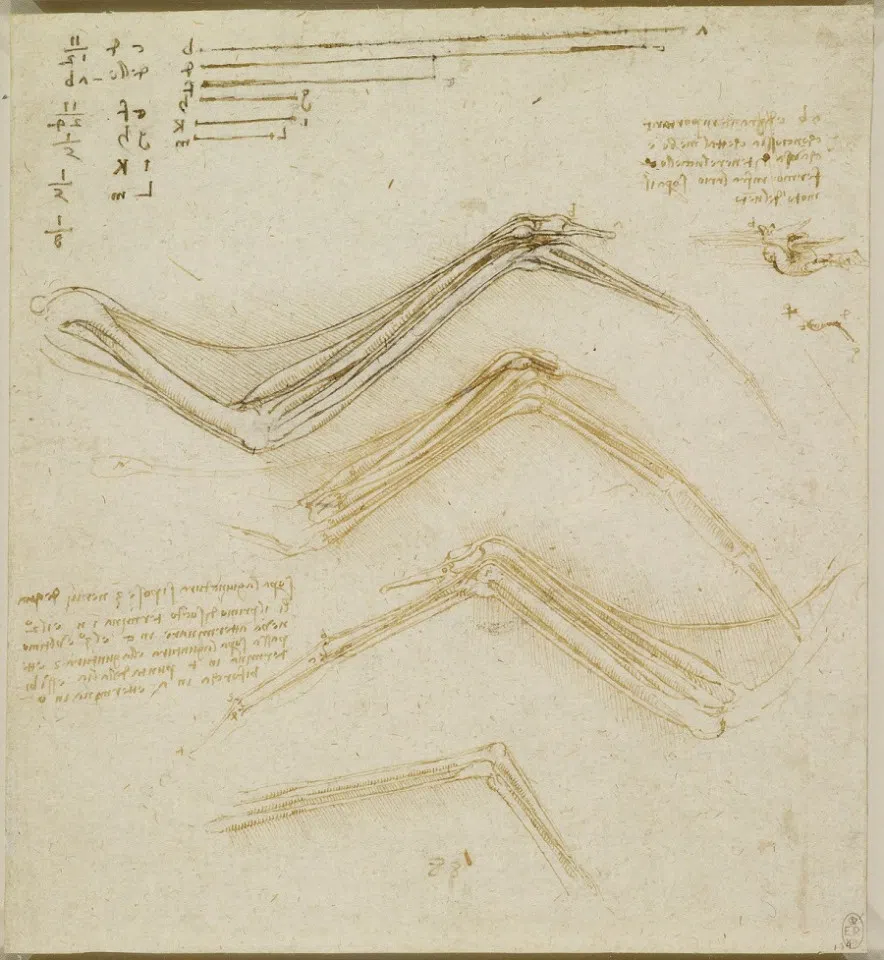
Later on, the scientists discovered the speed of light. Light can be calculated now. None of the scientists were Arians.
Arians are those who sit in darkness thinking about the speed of light. Their thoughts are like poetry, not science.
Science can be calculating, but not poetry. Poetry is utter loneliness - it requires one to sit in the darkness pondering light.
Raising the dead
Someone asked, "Why hasn't there been a da Vinci in 500 years?"
Is it because schools no longer tolerate the existence of "witches"?
I often felt close to the Arian da Vinci; close to his eccentric ways and drawn by him to enter into the netherworld, hiding among the forbidden cemetery, breaking the religious commandments and dissecting one corpse after the other with a knife in the dark and eerily silent catacombs.
He was called the Father of Anatomy.
But I am willing to look at the sketches in his manuscripts again and again - sketches of the heart, arm, calf, brain, uterus and the dead foetus in the womb...
Those sketches about the size of a palm - were they drawn in the dark catacomb under the candlelight?
He was the first to dissect a uterus and see a dead foetus in the womb. The foetus was curled up, like a seed that had not sprouted. I guess da Vinci must have thought of seeds too? He drew several seeds beside his sketch of the foetus.
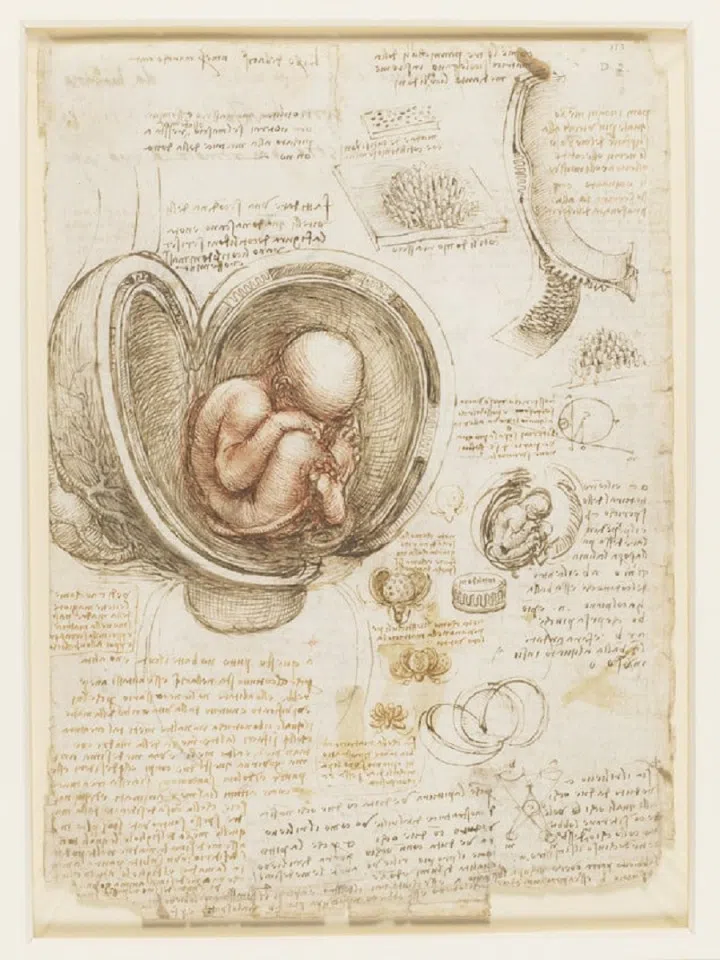
An illegitimate child, da Vinci was always looking for his mother. Walking along the alleyways of Florence, he often turned around suddenly - he felt that his mother was secretly following him but was unable to acknowledge him.
Do gynaecologists also think about the relationship between a foetus and a seed?
Cooped up alone in the catacomb for a long time and surrounded by countless corpses, this Arian was instead thinking about how the warm flow of blood rushes in and out of a contracting space. That space called the "heart" fills up and inflates when a warm fluid flows in, contracting when blood rushes out.
He ponders the space called the "heart" like a poet.
Ancient civilisations believe that "witches" can make the blind see and raise the dead.
Ram without a body
Aries is positioned in the spring equinox; it is the god that awakens the land.
Aries was once a memory of the spring equinox in Babylon and Egypt.
In later Greek literature, the ancient Aries turned into the story of the Golden Fleece, taking on humanity's love and hatred.
I dislike the Golden Fleece, the Greek myth behind Aries. Only the fleece remains; that lonely and conceited Aries hanging above West Asia and North Africa is missing the witch's body.

Let's not forget that Vincent van Gogh was also an Arian and possessed the "mad" genes of a witch as well. Whenever I told the story of van Gogh, I could feel him creating a commotion in my voice.
How long did he wander about? From Babylon to Egypt to Florence and then to Amsterdam... In the asylum at the Monastery of Saint Paul de Mausole in Saint-Rémy-de-Provence, he saw the night sky from his window - stars wandered about the inky blue-violet sky, like the eyes of the witches. Inside his room in the asylum, he was a witch. He knew death was near. On the night when the nuns slept and snored, the Aries up in the sky told him, "Get up and paint."
Who else is an Arian?
Like a witch in an oversized robe with wide sleeves and a modern virtual reality headset, playing games that make people dumb or insane...
Actually, a lot of my Arian friends are females, so I want to write about her story next.
After graduating from Tunghai University, Chen I-shu, who is also an Arian, went to Düsseldorf and I never met him again. I invited him to create a drawing of the zodiac for this article. The lines of his Aries were fluid like water, except for the huge pair of strong, black horns, which looked like the trumpet of the ancient witches, ready to blow a deafening talismanic spell.
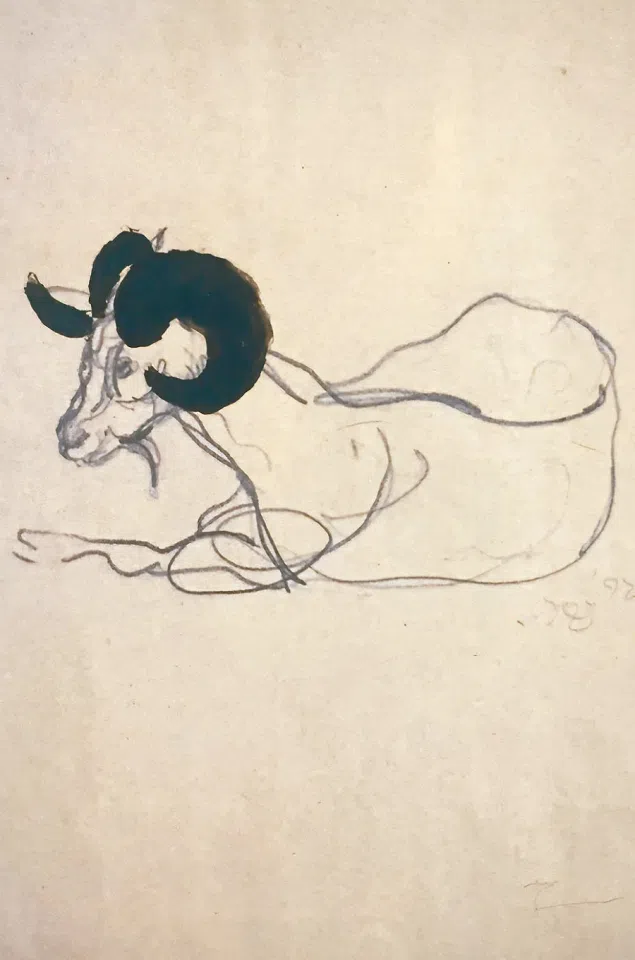
This article was first published in Chinese on United Daily News as "牡羊座(上)".
